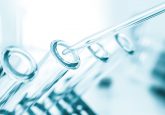New biosensor device developed for diagnosis of bacterial infections

Researchers from the University of British Columbia Okanagan (Kelowna, Canada) have used biosensors to create a new diagnostic tool to provide physicians with almost instant diagnosis of bacterial infections. This represents the first diagnostic tool to offer accurate results in real-time, compared to current methods used to test infections and antibiotic susceptibility that require days.
“Advances in lab-on-a-chip microfluidic technology are allowing us to build smaller and more intricate devices that, in the medical research space, can provide more information for health care practitioners while requiring less invasive sampling from patients,” explained Mohammad Zarifi, University of British Columbia Okanagan.
The device is able to rapidly and accurately analyze bacteria by sending microwave signals through the sample to generate a bacterial profile. Speed is particularly beneficial when diagnosing bacterial infections as every hour of delay in antibiotic treatment increases mortality rates by approximately 8% due to infection complications in the bloodstream, according to health care statistics.
“The diagnostic tool not only provides a rapid, label-free and contactless diagnostic tool for clinical analysis but it also goes further,” explains Zarifi. “This biosensor is a significant step forward in improving the complex antibiotic susceptibility testing workflow and provides a rapid and automated detection of bacteria as well as screening the bacteria proliferation in response to antibiotics.”
By tracking the amount of bacteria present in a variety of samples, under situations resembling those encountered in clinical microbiological laboratories, Zarifi and his research team were able to track their device.
Zarifi concluded: “The device is able to rapidly detect bacteria and, in addition, it screens the interaction of those bacteria with antibiotics. The combined results give health care practitioners more information than they currently have available, helping them move forward to determine accurate treatments.”
Sources: https://phys.org/news/2018-11-tool-speedy-diagnosis-bacterial-infections.html; www.sciencedaily.com/releases/2018/11/181129100026.htm



